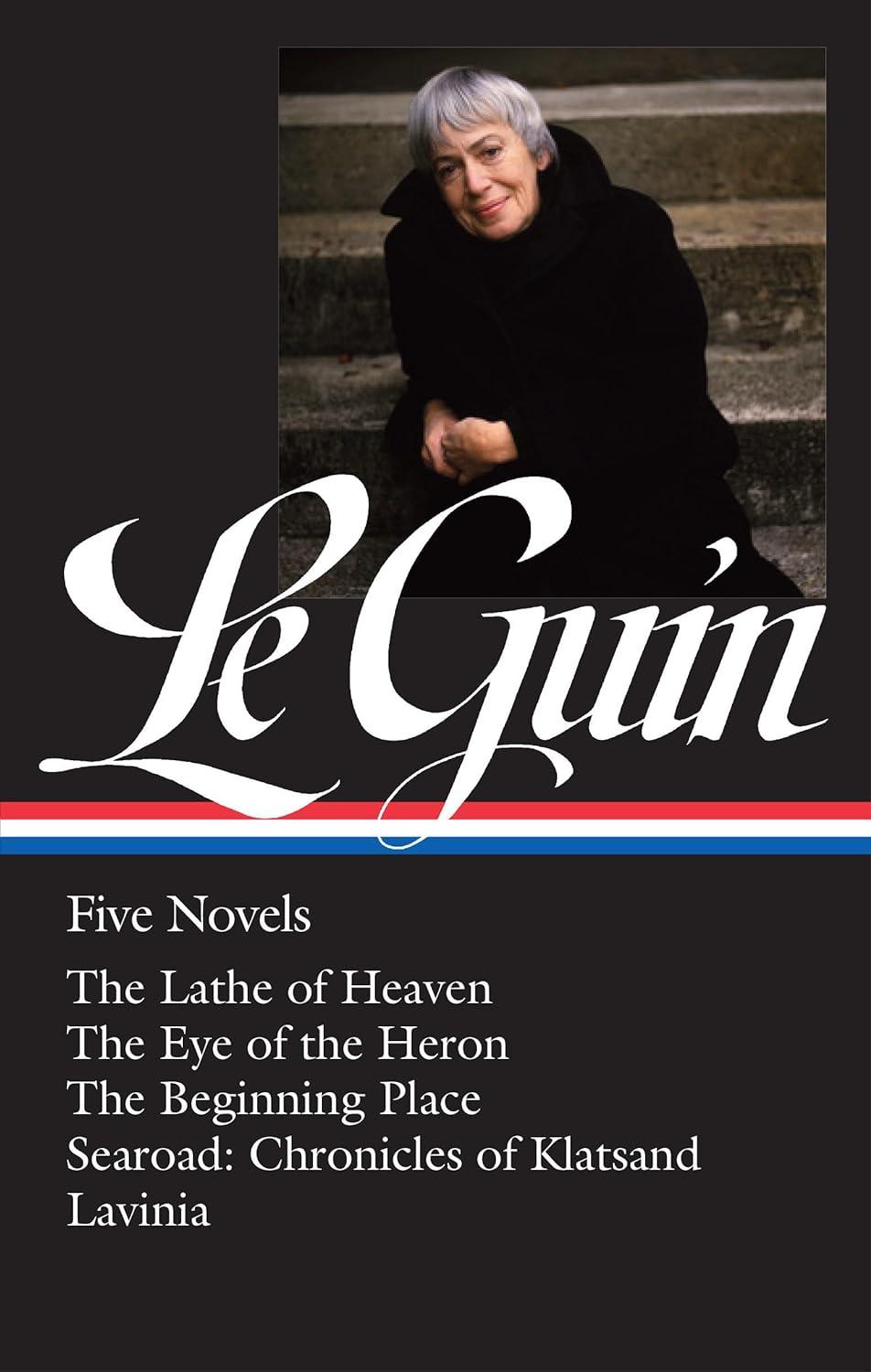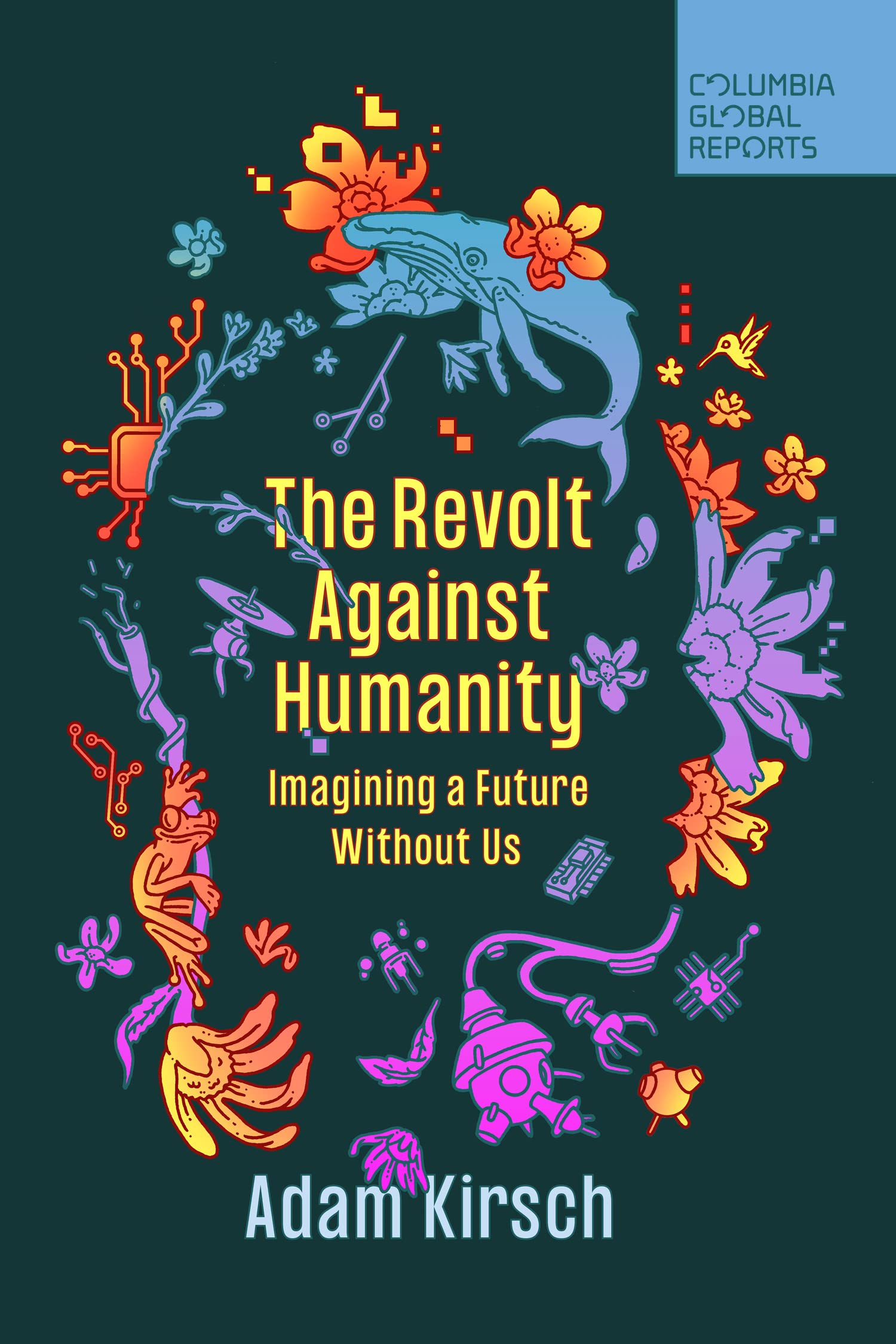The five novels included in this latest collection include a realistic depiction of a small coastal town (1991’s Searoad); a political thought experiment set on an alien world (1983’s The Eye of the Heron); a self-critical quest fantasy (1980’s The Beginning Place); an homage to Philip K. Dick’s brand of reality-shifting SF (1971’s The Lathe of Heaven); and Le Guin’s final novel, a subtle blend of history, myth, and metafiction (2008’s Lavinia). Each in some way blurs the line between the real and the unreal, or, more accurately, between the discourses of realistic, character-driven fiction and those of idea- and plot-driven forms such as fairy tale, epic, and utopian speculation. A core technique in the former is the representation of characters’ thoughts through what narratologist Dorrit Cohn termed psycho-narration. We are less accustomed to seeing into and through characters in the nonrealistic genres. These five novels demonstrate Le Guin’s proficiency in both kinds of fiction-writing, and, more significantly, show how her imagination really sparked when she was able to fuse them.
One job of an editor is tracking down references that might puzzle readers. As I worked on annotations for these novels, I was struck by Le Guin’s ability to make us see through the eyes of the other, looking not just outward from each point of view but also inward, peering into each character to discover a different model universe constructed out of memories and metaphors. In Le Guin’s hands, characterization is a form of world-building, even in a more-or-less realistic work like Searoad. The coastal village of that novel turns out to be a kind of multiverse. Characters interact across gulfs of difference. Conversations between neighbors might as well be conducted via Le Guin’s invented interstellar communication device, the ansible.
Here is an example of the sort of covert world-building I have in mind. One of the stories in Searoad, “Hand, Cup, Shell,” concerns the family of a well-known professor. The story’s narrator shifts viewpoints throughout, focalizing variously through Rita, the professor’s widow; Mag, her daughter; and Greta, Mag’s daughter. When the viewpoint character is Mag, a community college teacher with a Berkeley PhD, the narration is thick with literary allusions (requiring much annotation). Her train of thought veers effortlessly from Rilke to Dickens: “The headless torso of Apollo would speak: Du musst dein Leben ändern. Meanwhile, did she particularly want her life to change? ‘I will never desert Mr. Micawber,’ she said under her breath.” When the narrator borrows Greta’s thoughts, however, experiences are less likely to be processed through literary references than through geologic ones: basalt and slate, plain and fault.
Into this household comes Sue, a graduate student assigned to interview the widow about her famous husband. As Sue begins to understand the dynamics of this family with its strong thread of female accommodation and covert rebellion, her own act of rebellion is to set aside the assigned questions about Professor Inman and ask Rita and the others about their own lives, their own aspirations. It is a slight story. Very little happens. There are no dramatic confrontations, only the subtle slippage from one point of view to the next until we begin to understand the rituals of love and friction that maintain a family. If readers are willing to sort out the indirect discourse of thoughts, they will be rewarded with a vision of multiplicity and endless change and continuity, like the sea the characters live beside.
Different sections of the novel take up additional households in the tiny coastal town, such as the family of award-winning poet Virginia Herne. Le Guin chose the family name Herne to indicate the family’s slightly exotic status; it is an archaic version of “heron,” and theirs is a kind of bird’s-eye view of the town. Annotating the Hernes’ thoughts involved much sleuthing to follow the traces of settlement and displacement and privilege and injustice that make up the Western past. Still other characters understood their experiences not through history or poetic allusions but by reference to landscape or monetary worries or interpersonal squabbles: their chapters produced practically no annotations. The parts where I didn’t need to hunt down multiple references and gloss them were as revealing as those dense with allusion, because they showed how each character makes sense of experience, sometimes by not thinking about it at all.
Searoad shakes us loose from expectations of a hero-centered narrative, making it a companion piece to Le Guin’s great 1986 essay, “The Carrier-Bag Theory of Fiction.” The novel is enough of a carrier-bag to accommodate even a sly piece of fantasy: the story titled “Texts,” in which a writer named Johanna, visiting the coast to escape from writing, learns to read first the lacy seafoam left by retreating waves, then actual lace. A machine-made tablecloth says only “pith wot,” over and over, but a handmade lace collar carries the message “Sister, sister, sister, light the light.” Johanna might be delusional, but what she reads is as true as the social exchanges detailed in the book (after all, nobody is real: it’s fiction). By the time we read about Johanna, we have been trained by the narrator to accept whatever frame of reference the character lives by, whether that is local history or poetry or the price of lumber.
Without the novelist’s direct access to other people’s thoughts, we might never know that someone passing on the street lives in a reality as strange as Johanna’s. Le Guin reminds us that our only entry into such worlds is through texts, bits of verbal flotsam left at the high-tide line. In most of her work, however, including the other novels in this collection, something happens to give characters’ inner worlds a more material impact on exterior reality.
Fantasy studies require some sort of workable concept of reality: a shortcut through the wilderness of epistemology and ontology. Fantasy needs the real in order to assert the unreal. Kathryn Hume’s coinage “consensus reality” has long been my go-to: it expresses the idea that most people agree on most things about the universe and consequently will recognize deliberate departures from reality in a work of fiction. However, the details of that consensus have always been difficult to pin down, and in a world where people can pick and choose among wildly differing versions of mediated truth, consensus begins to look like a comfortable illusion. As the mechanisms of denial grow ever more self-validating, where is the consensus on facts, let alone any mutually agreed-upon explanations of them?
In annotating Searoad, I began to think of each character as inhabiting a cosmos accessible only through signals that emanated like photons escaping a black hole. Rather than a consensus reality, the novel depicts tangential realities: a cluster of pocket universes that occasionally touch on one another. The only signals that come through from one reality to another are texts, like lines of dialogue or Johanna’s lace work. As the narrator says of the enigmatic collar and its challenge, “she did not know what she was to do” with the message, “or how she was to do it.” It’s a first-contact story, even if the contact is one-way.
Each of the other novels in the volume is structured so as to allow inner worlds to emerge, engage with one another, and change material reality. In The Eye of the Heron, for instance, one set of colonists sees the new world in terms of conquest; another group consists of pacifists. The nature of their society has yet to be defined; it will be whatever they make of it. Over and against these two human communities is the heron (or herne) of the title: not an earthly bird but an alien creature, perhaps intelligent, attuned to the planet in ways the humans are not yet but might be someday: “Silent, angular, elegant, they nested in the drifts of red leaves among the roots, and fished for water creatures in the shallows, and gazed across the pool at human beings with large, round eyes as colorless as water.” If humans are to succeed on this world, they will need to see as the heron sees.
The Beginning Place uses a fantastic rather than a science fictional device to draw out its characters’ inner lives. Two young adults separately find their way into a green, twilit fairy realm. For Hugh and Irene, the space they term the Beginning Place is a refuge from problematic relationships and dead-end jobs. The villagers they meet invite them to view themselves as fairy tale heroes, but their tales do not match up with each other—where Hugh sees his role as rescuing a princess, Irene casts herself as apprentice to a dark wizard—nor with the function the village expects them to perform, which seems to be sacrificial victims. They must find a way to synch up their differing perceptions and to rewrite their presumptive roles. They also learn not to take strangers at face value even when—or especially when—those strangers embody Jungian archetypes.
In The Lathe of Heaven, inner reality is represented through dreaming, and the protagonist George Orr can change the world, utterly and retroactively, with his dreams. When George’s case is assigned to a therapist who specializes in dream disorders, Dr. William Haber’s brain wave–reading Augmentor gives him the power of suggestion over George’s dreams. Each of the main characters, George, Haber, and lawyer Heather Lelache, gets a turn at imposing a personal vision on reality, and each alteration creates greater disruptions. The narrator of Lathe dips only sparingly into the characters’ thought-streams, and does not need to in order to display their inner lives and histories.
Over and against these human meddlers, Le Guin poses the “Aliens.” We do not see into their minds, conscious or unconscious (the suggestion is that for them, there is no difference between those states). We don’t see in through their eyes, nor can the human characters even see their eyes (if any), which are hidden inside armor-like environmental suits. Yet Le Guin has given us clues for reading the Aliens’ intentions and perceptions. Most of the chapter headings of Lathe are passages from the Taoist sages Chuang Tse and Lao Tse. One of my most rewarding tasks as annotator was tracking down which English translation Le Guin started from in each case, and seeing how she clarified and simplified those translations. It may be the Aliens whose inner beings motivate those epigraphs. They are embodiments of the Tao and riders of the ocean of dreaming depicted in the novel’s opening scene: “Current-borne, wave-flung, tugged hugely by the whole might of ocean.” Of the human characters, George most closely approaches “the Way” that the Aliens follow effortlessly, and it is fitting that they help him find his way back to the Taoist ideal of effortless action or purposeful inaction.
The final novel in the volume, Le Guin’s last, is Lavinia, a story inscribed within, as it were, the Aeneid. Lavinia herself is a cipher in Vergil’s poem: a major player in the establishing of Rome who is given no part to play in the action. Le Guin gives her agency, a past, and a worldview that sometimes complements and sometimes contradicts that constructed by Vergil. We know about the contradictions because Lavinia meets the shade of Vergil in a liminal woodland. She is the anti-Dante: foreseeing the man she calls the poet rather than looking back at him, guiding rather than being guided, taking him back to the origins of Roman history and belief rather than draping him in Christian doctrine.
Lavinia is rich with history and geography and subtle shifts in the meanings of words, many of which Lavinia herself annotates for us in her conversations with the poet: virtue, piety, the numinous. She expresses puzzlement over Vergil’s Greek-influenced depiction of the gods as partisans in a great war: “The world is sacred, of course, it is full of gods, numina, great powers and presences. We give some of them names—Mars of the fields and the war, Vesta the fire, Ceres the grain […] But they aren’t people. They don’t love and hate, they aren’t for or against.”
Le Guin invites us to return with Lavinia to a different way of honoring the sacred in places and people. By introducing the poet as a vision experienced by her protagonist, she reminds us that both are, from the reader’s perspective, narrative constructs, and that the mythical Lavinia is as real as the historical Vergil—or more real—if the story can convince us of her lived experience and her ways of understanding the world.
Whether their inner worlds are accessible only through the narrator’s intervention or impose themselves on the fabric of reality, Le Guin’s characters always seem to be looking back at us as we read, challenging us to seek new frames of reference and to reconsider assumptions. Seeing through the herne’s eye, we catch a glimpse of strangeness: the “larger reality” of her National Book Foundation speech, though, like Johanna in Searoad, we may not know what to do with the message, or how we are to do it.


